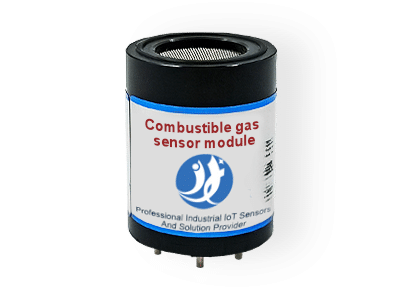What is an oxygen sensor? How do they work? While there are many types of oxygen gas sensors, their working principle can be categorized in one of 3 ways:
A chemical reaction that gives off electrons in the presence of oxygen.
A change in light intensity given off by a fluorescing material when exposed to oxygen.
A change in the wavelength of sound, light or in a magnetic field as oxygen passes through it.
Each of these ways to measure oxygen has strengths and weaknesses. While oxygen sensors are used in many applications and industries including automotive, health and medicine, industrial, food and beverage packaging, pharmaceutical and more,, each uses a different type of oxygen sensor best suited for the application.
Note that most oxygen sensors are designed to measure between 0 and 25% oxygen by volume or in breathable air. However, specialized oxygen sensors that can measure up to 100% oxygen are also available.

How does an Electrochemical oxygen sensor?
Electrochemical oxygen sensor is primarily used to measure oxygen levels in ambient air. They measure a chemical reaction within the sensor that creates an electrical output proportional to the oxygen level. Because electrochemical sensors produce a current, they can be self-powered, making them useful for measuring oxygen gas battery-operated underwater diving and hand-held personal safety devices. Examples include breathalyzers, respiratory sensors, and blood glucose sensors.
In terms of sensor advantages, electrochemical sensors are sought after due to their low power requirements, lower detection limits, and are often less directly affected by interfering gases. They also tend to be the least expensive kind of sensor.
A challenge for electrochemical oxygen sensors is that they depend on a chemical processes that is temperature dependent. The output of most electrochemical sensors will rely heavily on temperature compensation to provide reliable readings over a broad scope of ambient conditions.
Another challenge for electrochemical oxygen sensors is that over time the chemical reaction slows down and stops, typically between 1 and 3 years depending on the sensor design. Storing them in an oxygen-free environment will not add to the life span of the sensor. As the sensor ages it requires frequent recalibration and is not as accurate as other sensors.
However, because of their rugged design, low cost, and self-powering, electrochemical oxygen sensors are used in many devices, especially hand-held gas analyzers.
JXCT is one of the most popular manufacturers of the electrochemical oxygen sensor. Their sensors are used in dozens of 4-gas detectors and portable safety meters used worldwide.
 : +86 155 8830 2704
: +86 155 8830 2704 : jxdziot@gmail.com
: jxdziot@gmail.com
